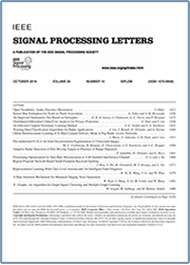A Multifamily GLRT for CFAR Detection of Signals in a Union of Subspaces
Top Reasons to Join SPS Today!
1. IEEE Signal Processing Magazine
2. Signal Processing Digital Library*
3. Inside Signal Processing Newsletter
4. SPS Resource Center
5. Career advancement & recognition
6. Discounts on conferences and publications
7. Professional networking
8. Communities for students, young professionals, and women
9. Volunteer opportunities
10. Coming soon! PDH/CEU credits
Click here to learn more.
A Multifamily GLRT for CFAR Detection of Signals in a Union of Subspaces
Testing whether a signal lies within a known subspace is a well-studied problem in the framework of matched-subspace detectors [1]–[2][3][4][5][6]. However, in practice, signals are often generated by multimodal processes so that there is not one but several possible subspace models. Among the set of possible models, the active subspace that generated the observed signal may be unknown a priori. This kind of signals complies with what is referred to as the UoS model. More precisely,
Signal detection under the UoS model has been partly addressed in the literature in the specific case where all subspaces are distinct, i. e., there are no subspaces in the union such that
In [11], the MFLRT has been introduced as a general solution to accommodate nested signal models. The idea is to add a penalty term to the GLR statistic to counteract its tendency to increase with the model order. More recently, a new normalizing transformation has been introduced in [12]. It generalizes the results of [11] and relies on the Legendre transform of the cumulant generating function (LT-CGF) of the test statistic. Although effective for various applications [13], [14], these results are not directly applicable to our context since the GLR statistic involved in our problem does not satisfy the required properties.
SPS Social Media
- IEEE SPS Facebook Page https://www.facebook.com/ieeeSPS
- IEEE SPS X Page https://x.com/IEEEsps
- IEEE SPS Instagram Page https://www.instagram.com/ieeesps/?hl=en
- IEEE SPS LinkedIn Page https://www.linkedin.com/company/ieeesps/
- IEEE SPS YouTube Channel https://www.youtube.com/ieeeSPS












